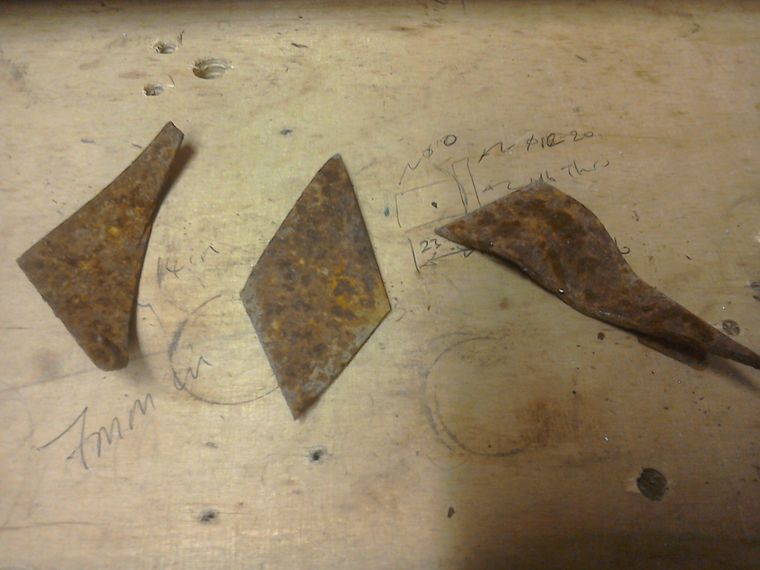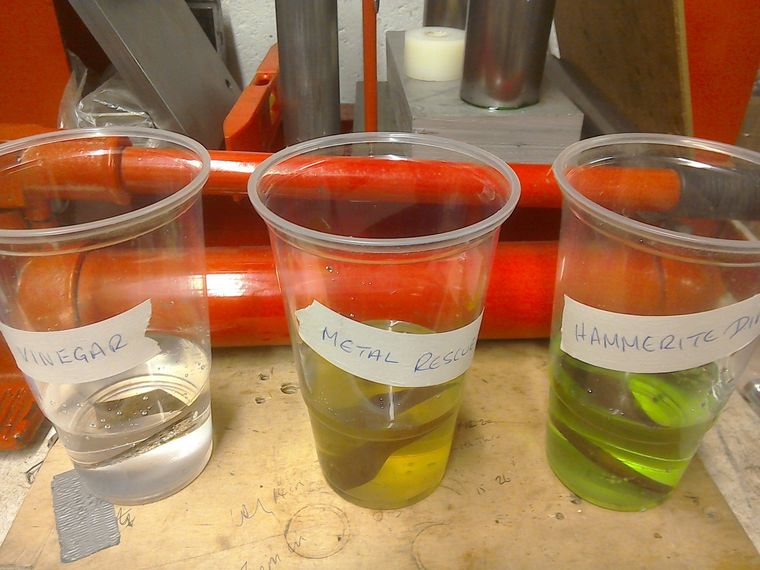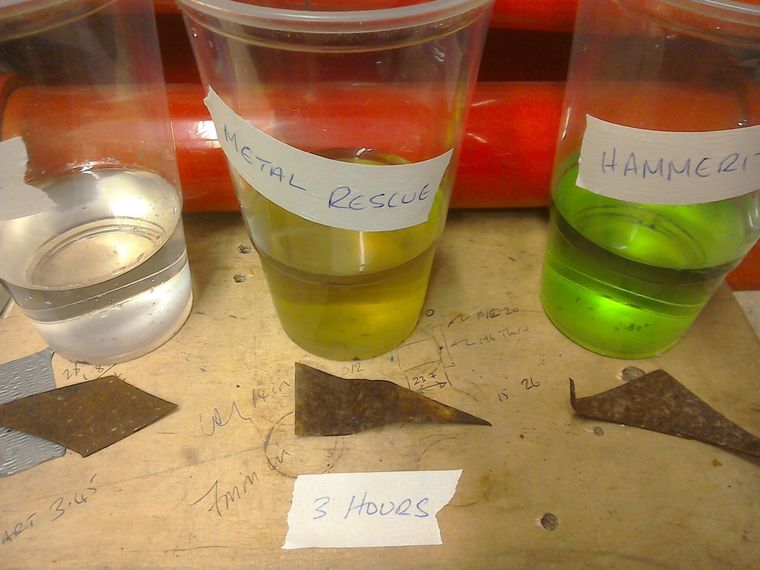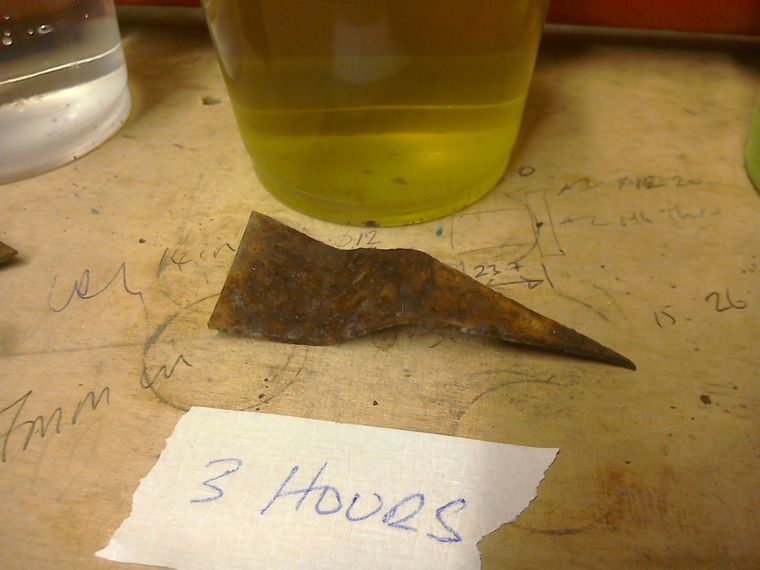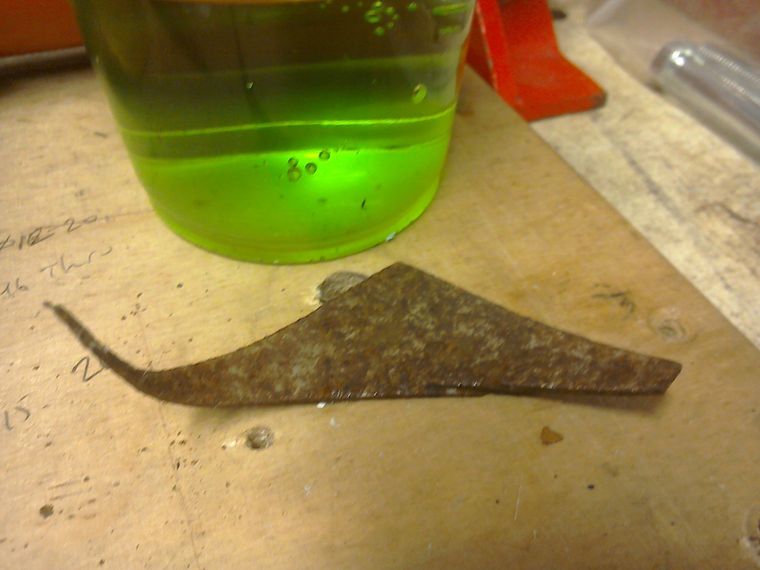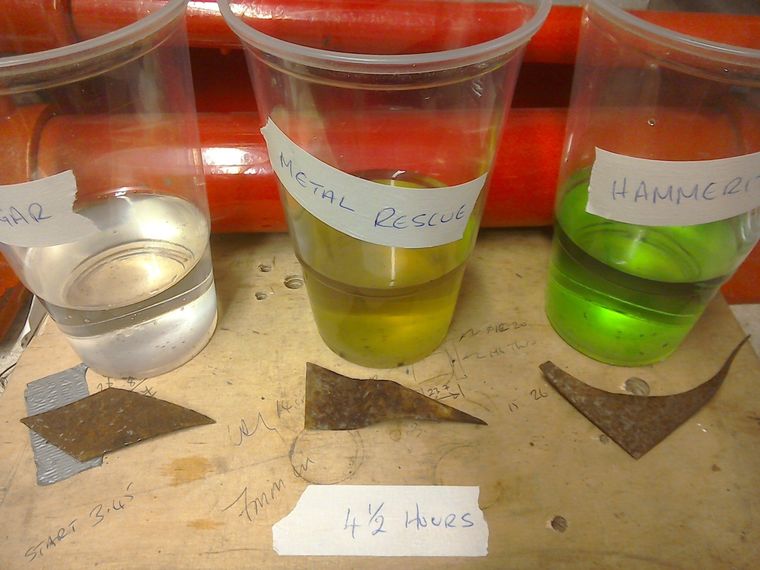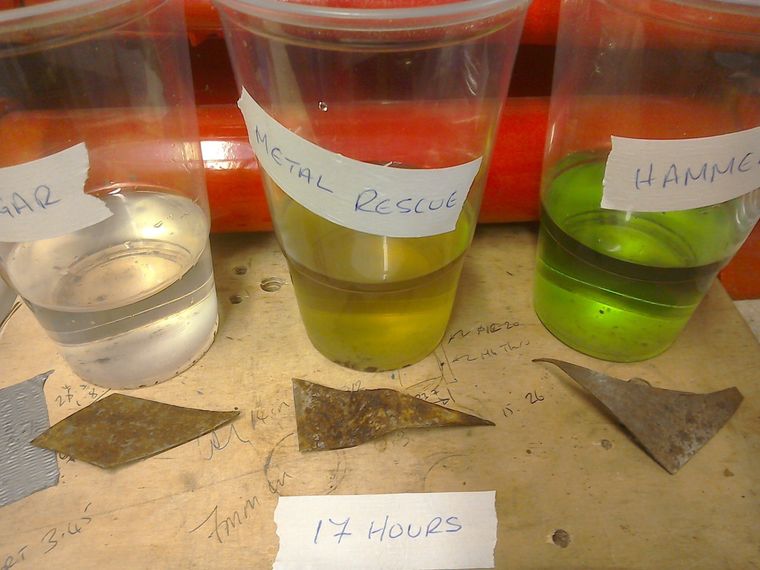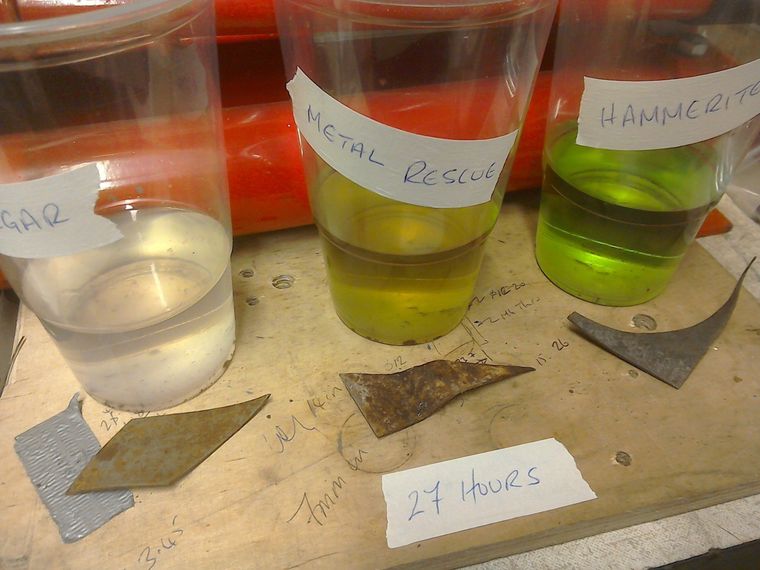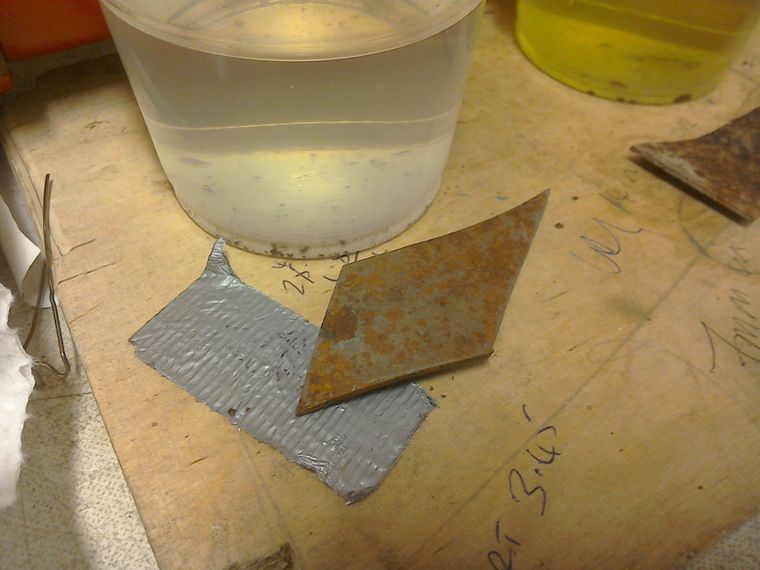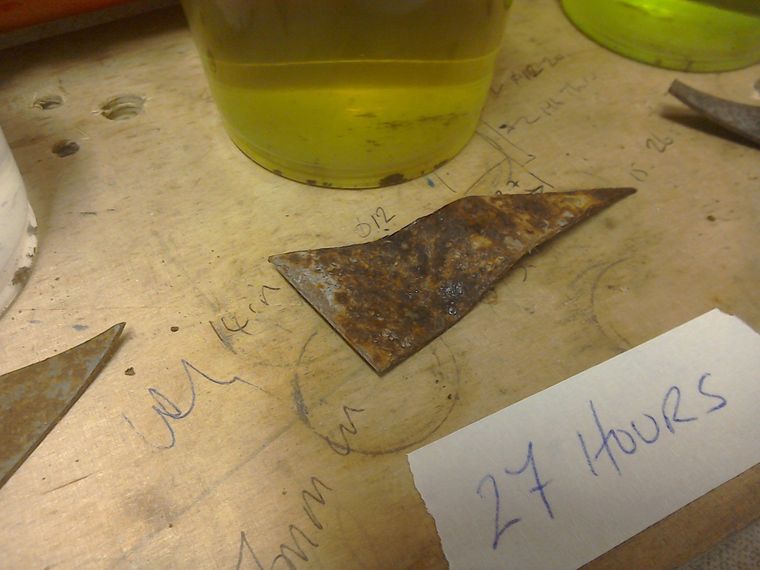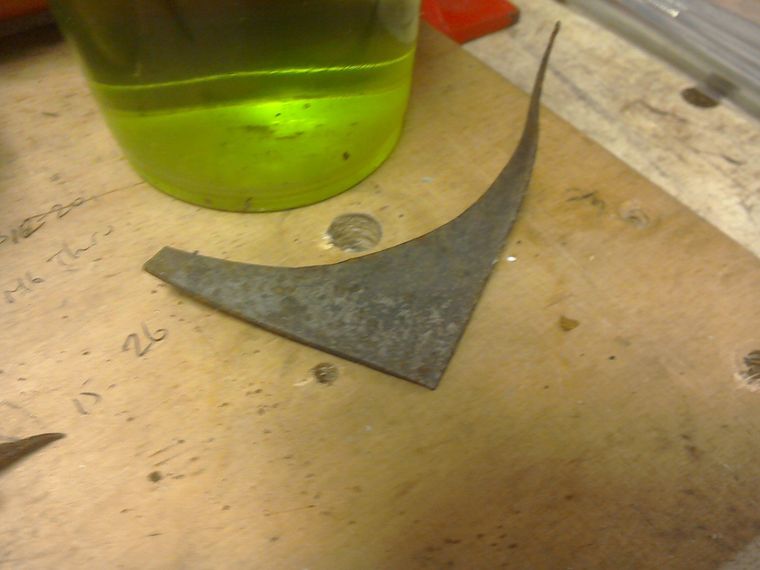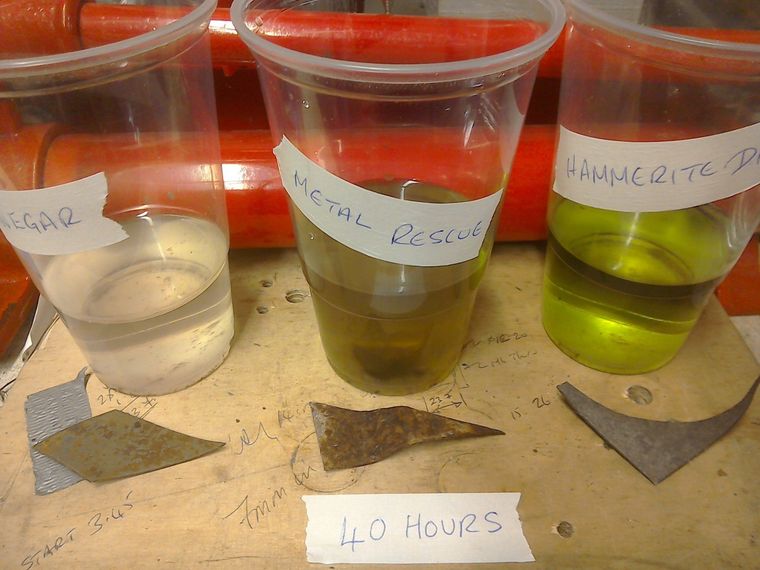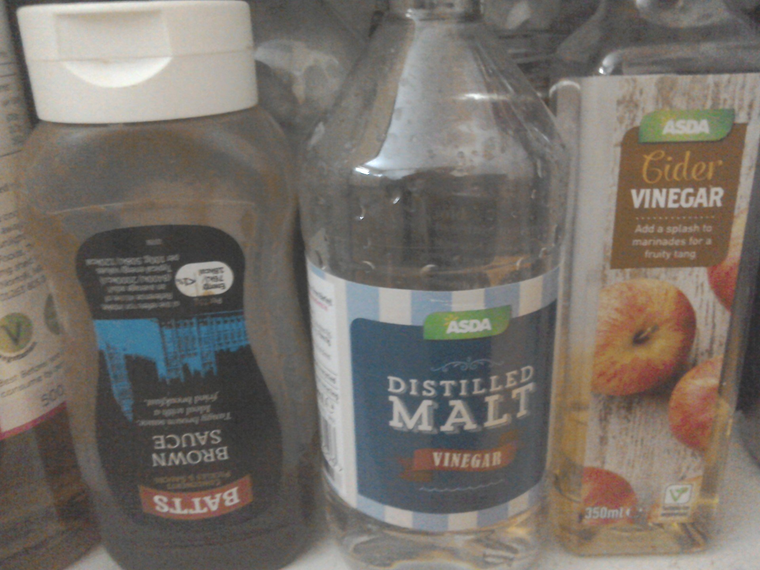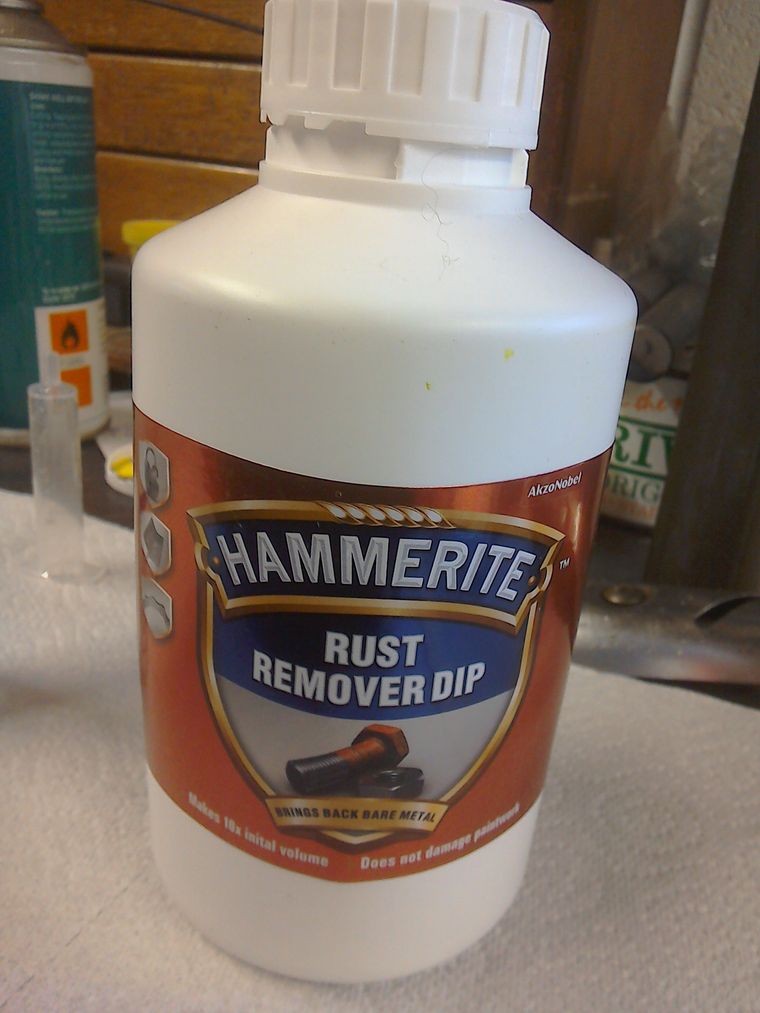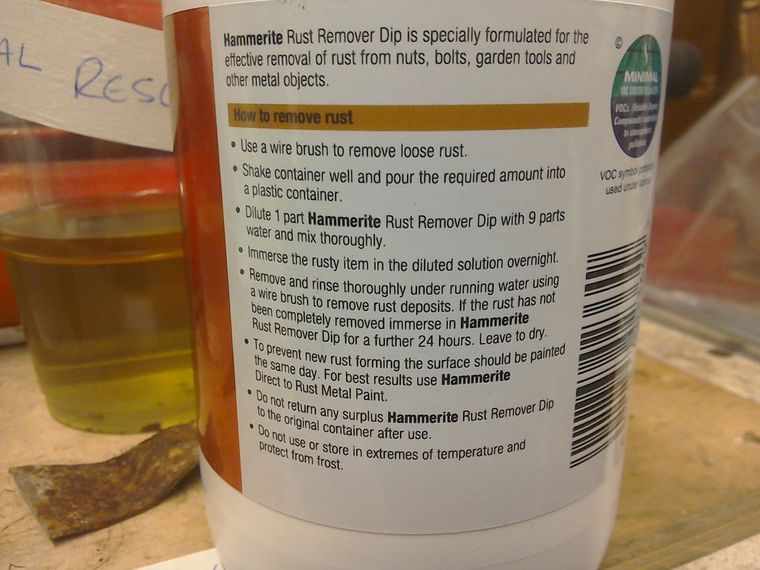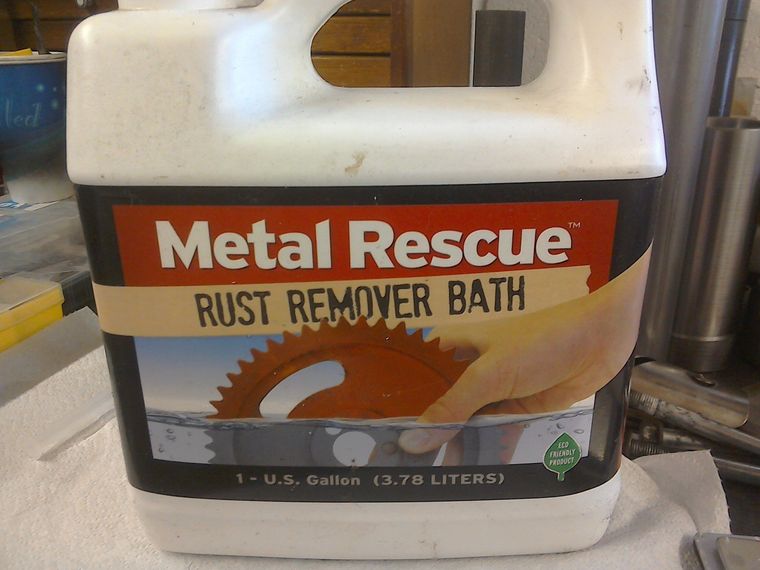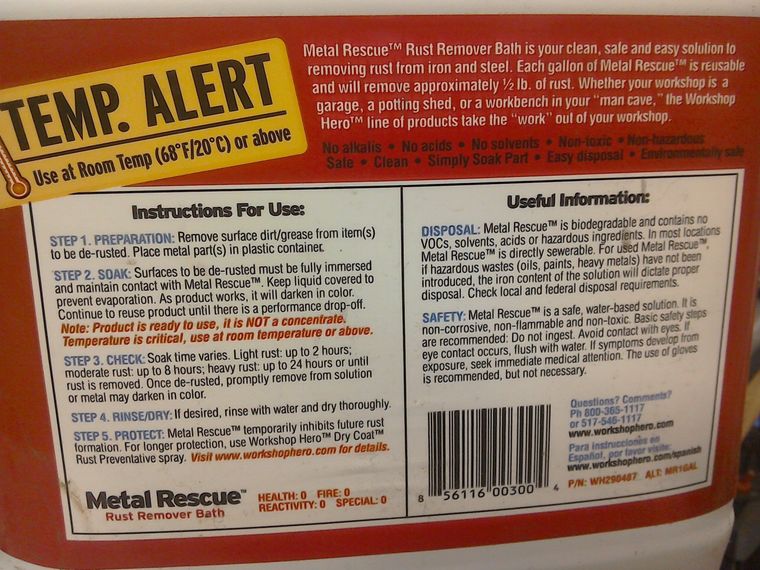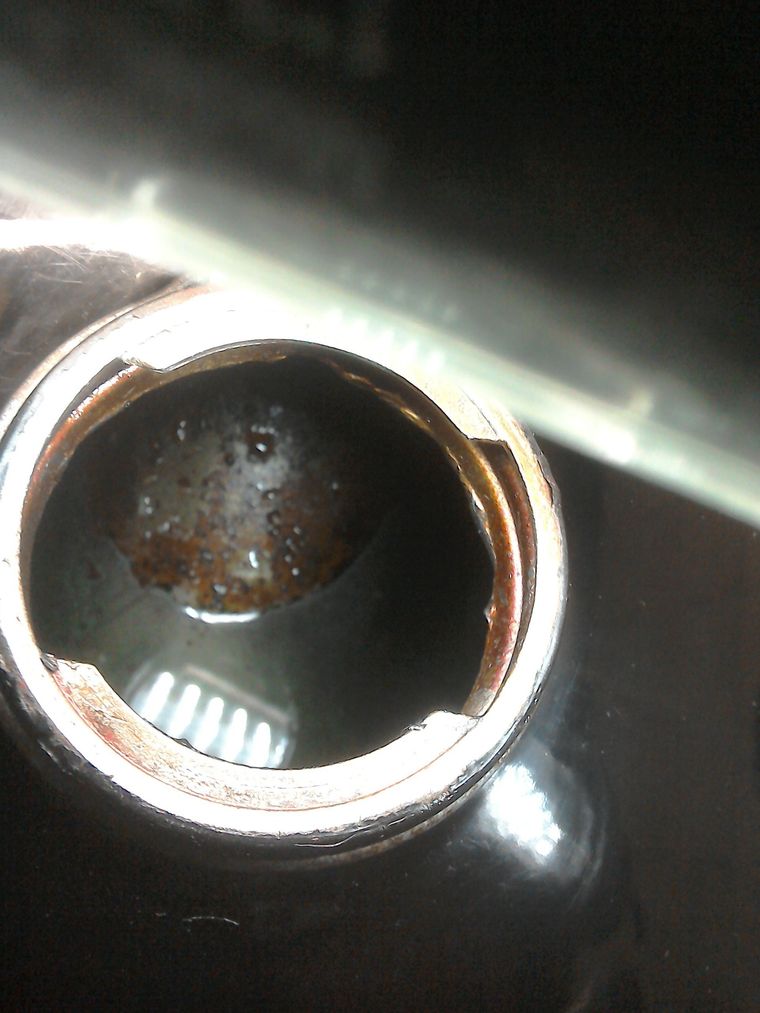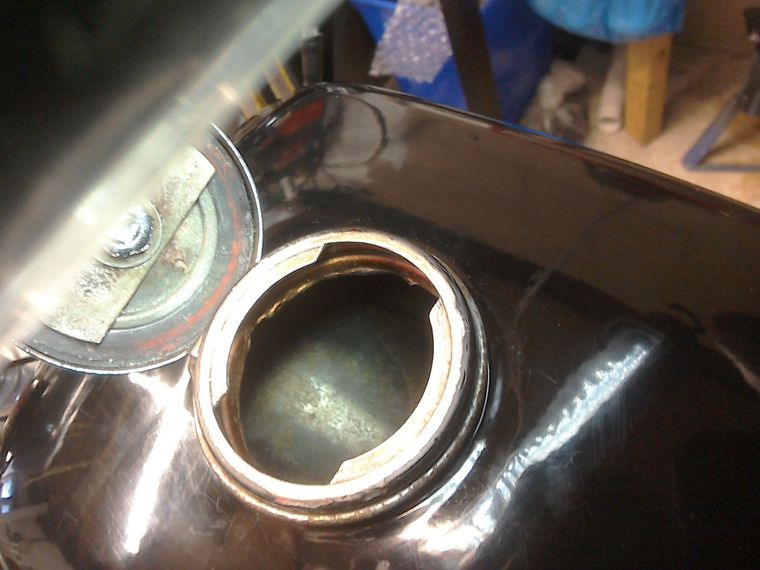Iron oxide, rust, call it what you like, it’s usually an unwanted addition to most motorcycles. There are many methods of removing it, but some of the easiest are liquid rust removers. Providing the part is either small enough to submerge, or be filled with the solution, you can then walk away and let the chemicals do their thing. The popular liquid at the moment is distilled vinegar. I hadn’t tried vinegar before, but I have used a couple of commercial products. So it seemed only right to try a little test of the three liquids.
Now, before we start, the Metal Rescue used in the test I have had for many years. It’s been well used and is now a long way past its best. If I was using fresh product (it’s a big if, I’m working on the assumption that the current formulation of Metal Rescue is as good as the old version) then from my previous experience of using the product, it would have won this test.
Now, before we start, the Metal Rescue used in the test I have had for many years. It’s been well used and is now a long way past its best. If I was using fresh product (it’s a big if, I’m working on the assumption that the current formulation of Metal Rescue is as good as the old version) then from my previous experience of using the product, it would have won this test.
Here are the three test specimens selected. They have been sat outside for well over a year and are suitably scabby.
The three chemicals on test. From the left: Distilled Vinegar, Metal Rescue and Hammerite Rust Remover Dip.
After three hours, none of the solutions had made much impression. Hammerite is slightly in the lead, with the other two battling over second place.
Here's a closer look at the test pieces. This is the vinegar test piece, there are a few shiny patches appearing.
The Metal Rescue specimen, again a few shiny patches are starting to appear. This really is unfair on the Metal Rescue, this is old solution and its effectiveness is greatly reduced. I feel new solution would have performed much better.
The Hammerite is performing the best so far, much more shiny patches are appearing, compared to the other two.
After four and a half hours, Hammerite is in the lead, followed by Metal Rescue and Vinegar.
So, then I left them overnight. In the morning, after 17 hours soaking, Hammerite is still in the lead. Vinegar and Metal Rescue are still following behind.
Then I forgot about them for the rest of the day! After 27 hours, Hammerite is still in the lead, followed by vinegar, Metal Rescue has given up!
And close up... The vinegar specimen
Metal Rescue...
And the Hammerite... The rust is almost gone, but the steel is darkening.
After 40 hours, the Hammerite has got rid of the rust, but has darkened the steel. The Vinegar is getting there slowly, but Metal Rescue is making no further impression.
So, for this test, Hammerite is proving the most efficient, but here's another important comparison, prices...
Vinegar first. This bottle cost 29p for 568ml from ASDA, or if you can find some in your kitchen cupboard, it's free! No special instructions for use.
Vinegar first. This bottle cost 29p for 568ml from ASDA, or if you can find some in your kitchen cupboard, it's free! No special instructions for use.
Hammerite rust remover dip, £10.20 for 500ml from Halfords. This dilutes, with water, to make 5 litres of dip.
And the official instructions...
Metal Rescue is now available as a concentrate (like the Hammerite) and costs around £32 delivered from Ebay. That's for 414ml, which makes up 3.78 litres of rust remover bath. This has changed since I purchased mine, which came ready to use. I'm assuming that otherwise (formulation wise) everything else remains the same.
And the (all important) instructions for use...
Conclusion: Well, in this test, the Hammerite proved the most efficient rust remover. Given my previous experience with Metal Rescue, I would say that fresh Metal Rescue would have de-rusted this in a fraction of the time, but it's over three times the price. It's all a question of balancing cost, verses time. If you've got the time to spare then Vinegar is by far the cheapest option, but the slowest. Fresh Metal Rescue would (probably) be the quickest, but is definitely the most expensive. Hammerite falls somewhere in the middle.
As a further test, I also used the Hammerite to clean up a rusty petrol tank. Here's how it went...
My latest motorcycle purchase came with a petrol tank that was sporting some rust inside. I’m not going to get around to this project for some time, so I wanted to give the inside of the tank a bit of a clean out so that I could assess its condition before liberally coating the inside with WD40 to preserve it until I got around to sorting it properly.
My previous go-to rust remover was Metal Rescue, it’s quick and it doesn’t affect paintwork (should you happen to spill it). Unfortunately, I’ve had my bottle of Metal Rescue for some time and it’s seen lots of use (you can reuse it many times, but its effectiveness reduces with
use) and it really needs replacing. I looked at the cost of a new bottle, but the price is quite steep now. Halfords had a bottle of Hammerite Rust Remover Dip, which makes up 5 litres of rust removing stuff for a little over a tenner – much less than the price of a similar quantity of Metal Rescue. Was it worth a try?
I bought 2 bottles, which when diluted as required, made enough solution to fill my little tank. I’ll admit that I was also being lazy. I wanted to leave the tank on the bike, so the tank needed to be full, there being no opportunity to tip the tank side to side to achieve full coverage.
I started with the tank part filled, and you can see the difference in the picture (below) between treated and untreated areas. (That’s after several hours. This stuff takes quite a long time to work. Initial instructions say leave overnight and if it still hasn’t cleared all the rust, then leave in another 24 hours.) So I then completely filled the tank and left it to do its stuff.
The result was (after the best part of 48 hours) that most of the rust is gone. Unlike Metal Rescue, this stuff works better if you are able to scrub it to help shift the rust and residue. That’s pretty difficult inside a tank. I found a brass (bottle?) brush that helped a bit. Have a magnetic pick-up tool, or tie it to a piece of string in case you drop it. Found that out the hard way!
After a bit of scrubbing, I drained the tank. I’ve bottled the solution and intend to try a reuse it – I’ll let you know how that goes. I should add that in the interest of laziness I drained the tank through the fuel tap. It takes a long while for 10 litres of liquid to drain out through a tiny tap! Then the tank has to be rinsed with water. Again getting the water in was much quicker than getting it out. The upshot of this was that there was ample time for a thin layer of flash rust to form before I could get all of the water out and the tank dried (with the aid of a hairdryer!)
So, yes, it does work, but if you’re going to use it on a petrol tank, take it off the bike so that you can get the liquid in (and out) quickly and easily agitate the tank to stir things up a bit. Don’t be lazy like me! However, the tank is cleaner and I can now see (with the aid of a flexible head torch thingy) that the rust inside wasn’t too bad. The tank is essentially sound. So I’ve applied copious amounts of WD40, which should keep further rust formation at bay until I get around to sorting the bike out properly.
My summary of this stuff would be that it does the job (given enough time).
Here's a picture of the tank part filled with the rust remover dip. You can see the rust remaining in the area that hasn't been submerged.
And now, with the tank emptied and rinsed, you can see that some light flash rust has formed, but it is a lot better than it was before.


